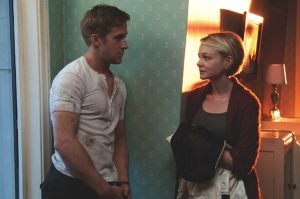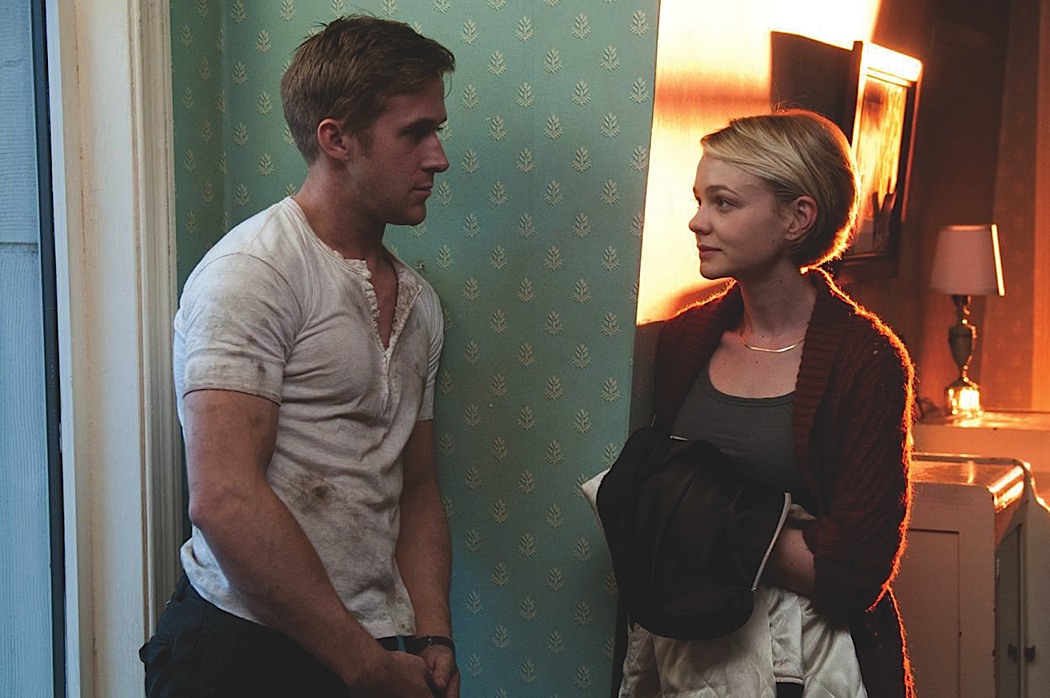Mike Mannarino
Contributor
Neon colours and beautiful cinematography are a good diversion from the drab acting and lacklustre soundtrack in Nicolas Winding Refn-directed Drive (2011), which opened in theatres September 16. Based on James Sallis’ novel and staring Ryan Gosling and Carey Mulligan, the film was featured at TIFF this year.

The story centres around the nameless protagonist, referred to only as the driver, played by Ryan Gosling. He is a laconic, occasionally awkward stunt driver, who moonlights as a get-away driver for heists. Gosling only has about eighty lines in the entire film.
Crime syndicate leaders Bernie (Albert Brooks) and Nino (Ron Perlman) set up the heists that Gosling’s character gets involved in.
The driver’s softer side is brought out by Irene (Carey Mulligan) who is always filmed brighter than the other characters in a way that seems angelic and pure.
The film progresses slowly into its expected action sequences, but keeps from losing the artistic elements in the process.
The cinematography was exclusively wide-angled 35mm with no hand-held camera use, making every scene eye pleasing. It serves to compliment the uncommon beauty of Los Angeles, showing imagery of its mountainous landscape.
Bryan Cranston, originally known for his role as the father in TV comedy Malcolm in the Middle, has made an almost seamless transition from comedy to drama, complementing the style of Refn’s film.
Ron Perlman’s crappy mafia accent, however, did nothing for the film. He remained one-dimensional as ever, making a dent the film’s overall flow.
Amidst the pointless, artistic imagery, the plot developed too slowly. Influenced by the book, screenwriter Hossein Amini was faced with the hardship of sacrificing plot detail for aimless imagery-based scenes, such as Ryan Gosling’s character fixing the carburetor of the car.
The songs were good but failed to capture the intensity the scenes were portraying. They felt as though the songs were making light of some scenes.
I found the slowly developing, almost poetry-in-motion style to resemble the classic 1966 film The Good, The Bad and The Ugly. The film was a visual masterpiece and brought westerns of that era to new heights. Like Drive, the story is also centred on an unnamed protagonist, referred to only as Blondie.
This film was arguably Clint Eastwood’s greatest role. Director Sergio Leone used natural light and wide angles to capture the beauty of the Spanish landscape. As the third installment of the unofficial Dollars Trilogy, Leone was able to fine-tune his art, positioning the camera so perfectly that the actors could stand silent and allow the epic score and camera to do the rest.
If you have not seen this film, it is worth the three hours and then some of classic spaghetti western. If you have seen it and enjoyed it, then Drive is definitely a film worth seeing. Gosling was essentially a modern day Blondie in the film, showing more emotion, but never losing the intensity the role needed to be successful.
I came into the film with high expectations and came out mostly satisfied. Each scene was like a storyboard of illustrations brought to life. With that said, I must urge people to go into this film knowing it is an art-house style film. Don’t be put off by the slow progression—Drive is a rare, artistic action flick.


